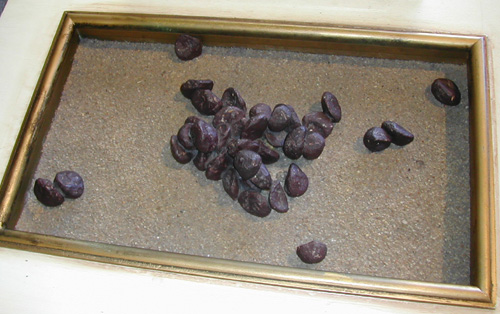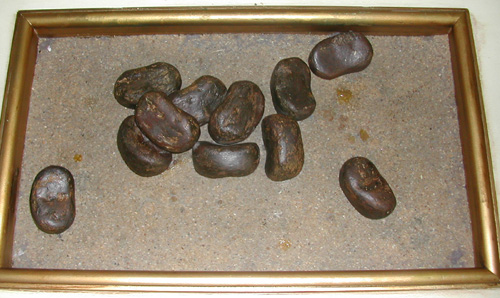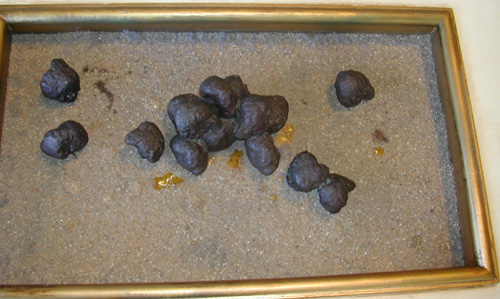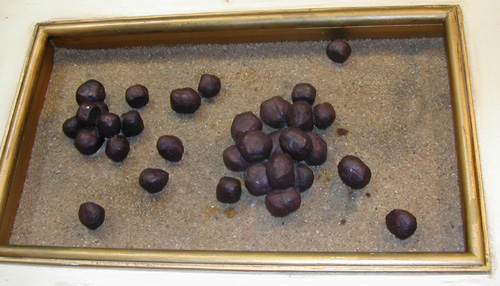After a longer than anticipated delay, here are the answers to the circus animal poop identification challenge from back in August.
While there are some handy flowcharts and poop identification picture on the web, I haven’t yet found such a guide for African or Asian wildlife. Since many, if not most, of the high traffic circus animals are from those two continents, that leaves me with rationales for the pictured poop that are a little more hand-wave-y than I’d like. Animal poop experts who would like to give us more information about why these particular animals poop the way they do are cordially invited to hold forth in the comments!

SAMPLE 1: Giraffe poop.
Giraffes are herbivores (related to deer). When they poop, they let loose a bunch of little pellets that look almost like a rabbit made them.

SAMPLE 2: Elephant poop.
Elephants are herbivores and elephants are big. They are also working with digestive systems that only digest about 40% of the food they’ve taken in — which means the other 60% exits the pachyderm as poop. Since elephants have to eat a lot of food to meet their nutritional needs, that 60% means some big elephant droppings.

SAMPLE 3: Zebra poop.
Zebras are relatives of horses. Like horses, they’re herbivores. They graze on lots of different sorts of plant matter, depending on what’s available.
In the wild, I’m told, zebra poop is usually pretty grassy. In the circus, it may be less so.

SAMPLE 4: Tiger poop.
The tiger is a carnivore (and a big cat). These droppings are kind of pointed at one end, making it likely that they emerged from the butt of a feline.

SAMPLE 5: Camel poop.
Camels, like zebras, are herbivores and ungulates. Since they live in conditions where water is often scarce, they have digestive systems that wring their food dry of almost all of its moisture. As a result, freshly emerged camel droppings are often dry enough that you can start a fire with them.
Thanks for playing along!

While not an expert, I have hiked many miles in the Sierra Nevada to know that all poop (scat) is not created equal. The link you provided has an image of bear scat. That scat reveals the bear was feeding on insect larvae (yellow jackets and ants are popular food items) whereas a bear feeding on berries will have the seeds and color of those berries. Then there’s the bears that got into a hiker’s food cache and you’ll see wrappers and other packaging.
As you point out, scat is dependent on diet and digestive system. I run into quite a bit of mule scat on the trail, and it’s easy to see if they have been grazing. The scat is dry and usually falls apart quickly. If the packer is feeding them grain, the scat is denser and darker with higher water content. The animals drink more to compensate for the lack of moisture in the food.
The one that made me wonder for miles and miles was llama scat. It resembles rabbit scat in size but volume is much greater. I was completely baffled by it and the ground was to rocky to find tracks. When I finally overtook the woman leading her llamas, my questions were answered.
i would like a free sample of your elephant shit for my new Pasta Recipe.
hi! thereis some kind of poop in my front lawn and i am curious to see what of animal it came from. it looks kind of like a patty. i live in a preety populaued neighbor hood in geoggia. please respon asap.